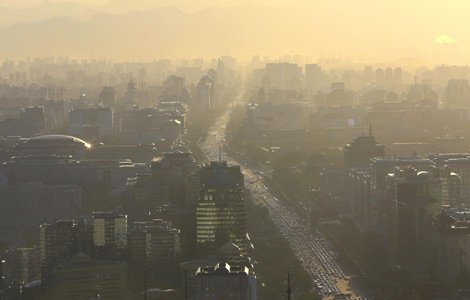

|
 |
|
Vehicles are seen on Chang'an Avenue at the rush hour in Beijing, August 29, 2013.?[Photo/Agencies]? |
Construction of the centers is part of the city's efforts to optimize energy mix and reduce emissions, according to officials with the Beijing Municipal Commission of Development and Reform.
With investment of 47.7 billion yuan (7.79 billion U.S. dollars), the four power centers and 40 other related utility projects will reduce sulfur dioxide by 10,000 tonnes, provide heating for 100 million square meters and generate 7.2 million kilowatts of electricity through natural gas.
These services have so far been powered by four coal-fired power plants, which burned 9.2 million tonnes of coal in 2012, or 40 percent of the 23 million tonnes Beijing consumed in the same period. They will be shut down once the new power centers start operation.
Heavy smog shrouded Beijing's sky during the seven-day National Day Holiday, prompting concern about worsening air pollution in the nation's capital. Coal burning accounts for 16.7 percent of airborne particles measuring less than 2.5 microns, or PM 2.5, that is blamed for the smog.
In a recently published action plan on cleaning Beijing's air, municipal authorities vowed to slash coal consumption by 1.3 million tonnes by 2017.